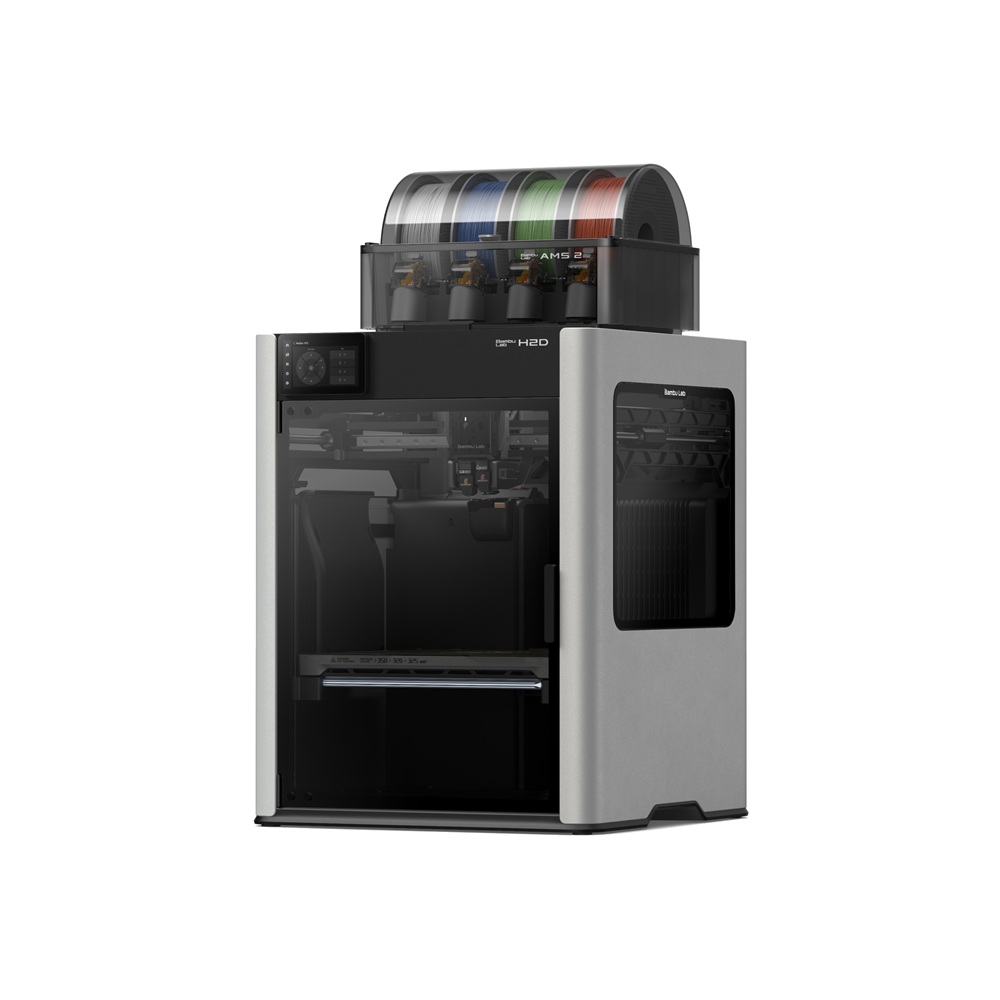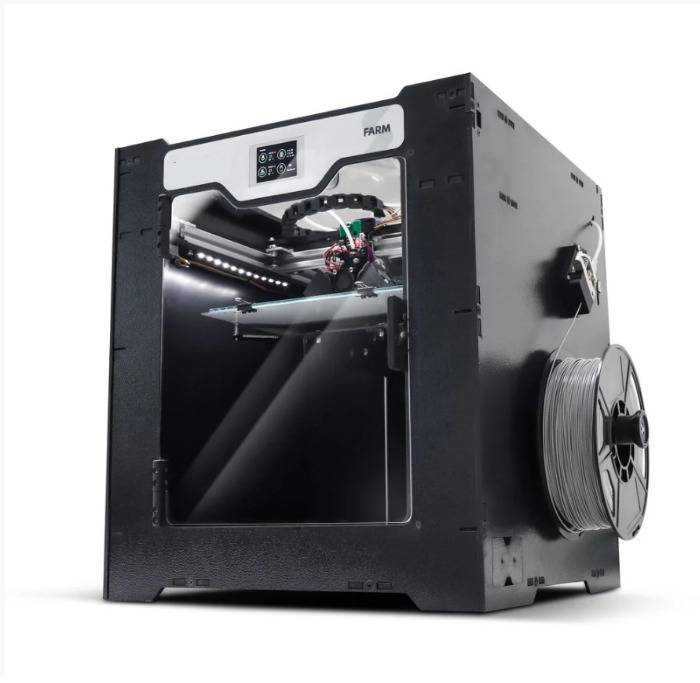Compare H2D vs FARM
Comparison between the best 3D printers
Choose the best 3D printer at the best price. The cheapest 3D printers are here.
Buy a 3D printer here with 3D Fila.
 |
 |
|
| Model | H2D |
FARM |
| Printing Material | Filament | Filament |
| Buy Filament for Bambu Lab H2D | Buy Filament forSethi 3D FARM | |
| Estimated price | $1899,00 | $1127,00 |
| Manufacturer | Bambu Lab | Sethi 3D |
| Release Year | 2025 | 2021 |
| Print Volume [mm] | 350x320x325 | 240x240x240 |
| Printer Size [mm] | 492x514x626 | 550x42x500 |
| Weight [kg] | 42,3 | 15,7 |
| Power Loss Recovery | YES | YES |
| Enclosed printer | YES | YES |
| Bed Leveling | Automatic | Automatic |
| Filament End Sensor | YES | YES |
| Bed type | Heated | Heated |
| Power supply system | Direct Drive | Bowden |
| Standard nozzle | 0,4 | 0,4 |
| Maximum Nozzle Temperature [°C] | 350 | 270 |
| Maximum Bed Temperature [°C] | 120 | 120 |
| Maximum printing speed [mm/s] | 600 | 80 |
| Filament holder | YES | YES |
| Camera for supervision | YES | YES |
| Recommended filaments | PLA, PETG, ABS, ASA, TPU, PVA, Nylon (PA) | PLA, PETG, Tritan, Flex, ABS |
| Recommended slicers | Bambu Studio | Cura, Simplify, Slic3r |
| Maximum Resolution [mm] | 0,01 | |
| Processor | ||
| Display | Touchscreen 5'' | Touchscreen TFT |
| Power Supply | 450 W | |
| Connectivity | Wifi, Bambu bus, Cartão SD | USB |
| Operating systems | Windows, Mac, Linux | Windows, Mac, Linux |
| Date of registration in the system | 2025-03-31 | 2022-10-11 |
| Release date | 2025 | 2021 |
| Extra features | Bambu Labs H2D combines high-speed 3D printing with a chamber heated up to 65 °C, dual extrusion with automatic nozzle switching, an AMS for filament drying and exchange, and AI sensors that detect failures. It offers optional laser and digital cutting capabilities, features intelligent calibration through computer vision, vibration control, enhanced fire safety, and real-time camera monitoring. | Sethis Farm printer offers a generous 240 x 240 x 240 mm print area, ideal for large projects. Its intuitive touchscreen display makes it easy to operate, while the intelligent sensor prevents problems by detecting filament shortages or jams. Its power recovery feature allows you to resume printing after interruptions. It stands out for its 9-point optical auto-leveling and high-performance heated bed, ensuring accuracy and versatility on different materials. Its 32-bit electronics and silent drivers promote a smooth and efficient experience. In addition, the Farm has a closed cabinet, expanding the range of usable polymers, and a turbo cooling system to speed up the process between prints. The machine also offers practicality with a storage drawer and simplified software updates. |
| Support for multiple colors and materials (AMS and CFS) | YES | NO |
Notes * |
||
| Cost-benefit | 7 / 10 | 6 / 10 |
| Hardware | 8 / 10 | 3 / 10 |
| Tela | . | . |
| Print volume | 4 / 10 | 3 / 10 |
| Performance | 5 / 10 | 0 / 10 |
Conclusion |
| In comparing the H2D printer by Bambu Lab and the FARM printer by Sethi 3D, several factors emerge that can guide potential buyers in making an informed decision. The H2D, while positioned at a higher price point, offers superior specifications, including a larger print volume and significantly higher maximum printing speeds and temperatures. It is also equipped with advanced features such as dual extrusion capabilities, intelligent calibration, and multiple color/material support, making it a robust option for serious enthusiasts or professionals who require high performance and versatility. The printer’s modern design and extensive features suggest it is well-suited for users aiming for high-end 3D printing outcomes. On the other hand, the FARM presents itself as a more budget-friendly option without sacrificing essential features like automatic bed leveling and recovery from power loss. Though its specifications are more modest, it remains a capable machine for hobbyists or those engaged in less demanding projects. The intuitive user interface and practical design elements enhance user experience, making it an attractive choice for those who desire a cost-effective solution with reliable performance. In conclusion, the decision between the H2D and FARM printers largely depends on your specific needs and budget. If you prioritize high-speed printing and advanced capabilities, the H2D may be worth the investment. Conversely, if you seek a reliable, user-friendly printer for moderate projects at a more accessible price, the FARM could be the better fit. Ultimately, each model has its merit, catering to different levels of expertise and project requirements. |

